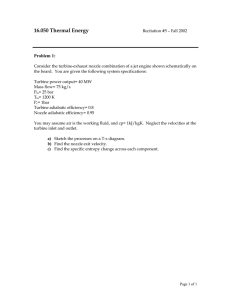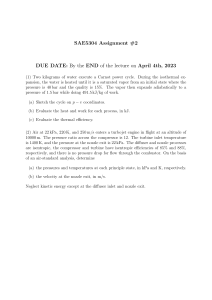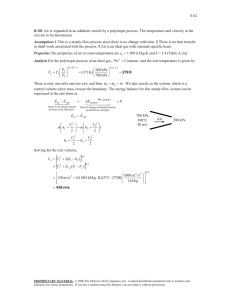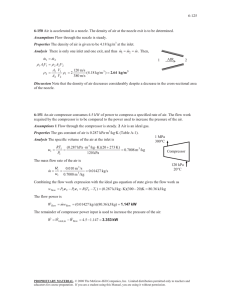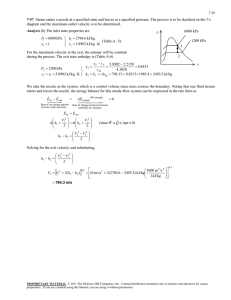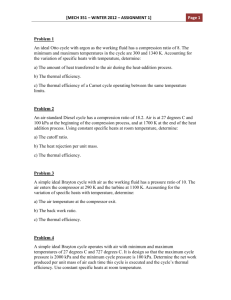Tarea III
advertisement
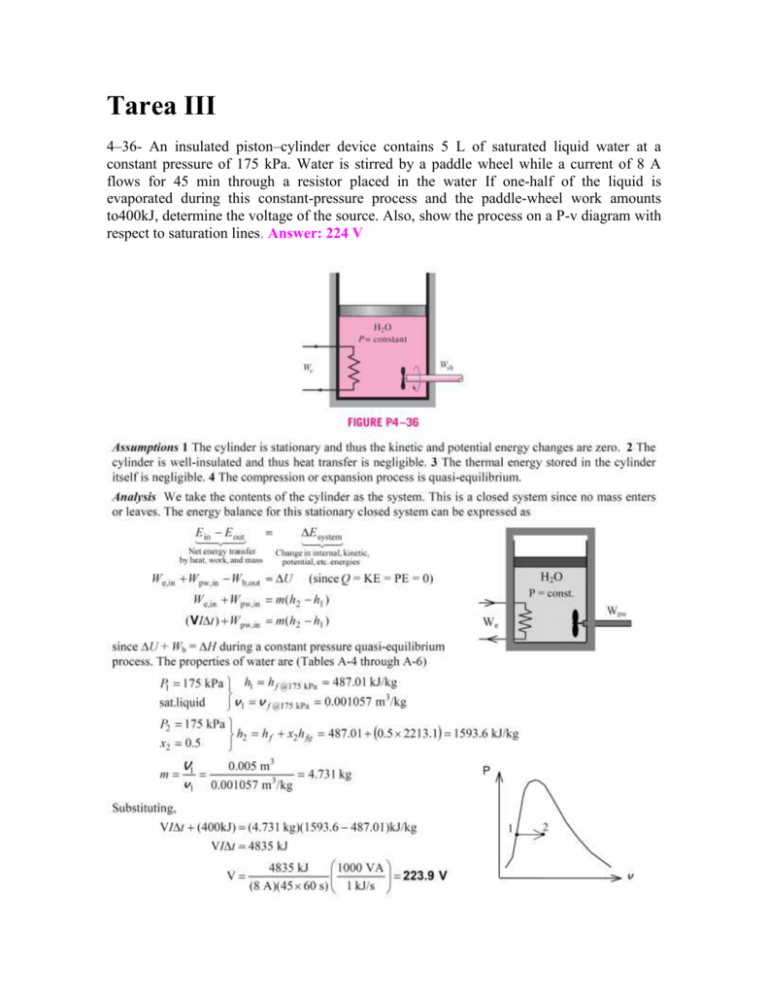
Tarea III 4–36- An insulated piston–cylinder device contains 5 L of saturated liquid water at a constant pressure of 175 kPa. Water is stirred by a paddle wheel while a current of 8 A flows for 45 min through a resistor placed in the water If one-half of the liquid is evaporated during this constant-pressure process and the paddle-wheel work amounts to400kJ, determine the voltage of the source. Also, show the process on a P-v diagram with respect to saturation lines. Answer: 224 V 4–134. Two rigid tanks are connected by a valve. Tank “A” contains 0.2 m3 of water at 400 kPa and 80 percent quality. Tank “B” contains 0.5 m3 of water at 200 kPa and 250°C. The valve is now opened, and the two tanks eventually come to the same state. Determine the pressure and the amount of heat transfer when the system reaches thermal equilibrium with the surroundings at 25°C. Answers: 3.17 kPa, 2170 kJ 5–30 Air enters an adiabatic nozzle steadily at 300 kPa, 200°C,and 30 m/s and leaves at 100 kPa and 180 m/s. The inlet area of the nozzle is 80 cm2. Determine (a) the mass flow rate through the nozzle,(b) the exit temperature of the air, and (c) the exit area of the nozzle. Answers: (a) 0.5304kg/s, (b) 184.6°C, (c) 38.7 cm 5–49 Steam flows steadily through an adiabatic turbine. The inlet conditions of the steam are 10 MPa, 450°C,and 80 m/s, and the exit conditions are 10 kPa,92 percent quality, and 50m/s. The mass flow rate of the steam is 12 kg/s. Determine (a) he change in kinetic energy, (b) the power output, and(c)the turbine inlet area. Answers:(a) 1.95 kJ/kg, (b) 10.2MW, (c) 0.00447 m2 6–71 A Carnot heat engine operates between a source at1000 K and a sink at 300 K. If the heat engine is supplied with heat at a rate of 800 kJ/min, determine (a) the thermal efficiency and (b) the power output of this heat engine. Answers: a) 70 percent, (b) 9.33 kW 6–76 In tropical climates, the water near the surface of the ocean remains warm throughout the year as a result of solar energy absorption. In the deeper parts of the ocean, however, the water remains at a relatively low temperature since the sun’s rays cannot penetrate very far. It is proposed to take advantage of this temperature difference and construct a power plant that will absorb heat from the warm water near the surface and reject the waste heat to the cold water a few hundred meters below. Determine the maximum thermal efficiency of such a plant if the water temperatures at the two respective locations are 24 and 3°C.
